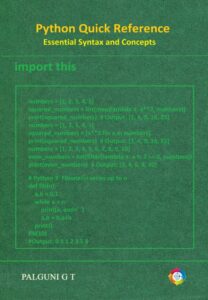Quantum computing hardware represents one of the most complex technological frontiers in modern science.
Unlike classical hardware, which manipulates binary bits using electronic circuits, quantum hardware must control fragile quantum states — superposition and entanglement — that are extremely sensitive to the environment.
While researchers have demonstrated powerful prototypes, scaling quantum systems into reliable, fault-tolerant computers faces numerous scientific, engineering, and material challenges.
Understanding these challenges is essential to appreciate the pace and direction of progress in quantum technology.
1. Decoherence and Environmental Noise
The Challenge
Quantum states are highly delicate.
Any interaction with the environment — temperature fluctuations, electromagnetic fields, vibrations, or cosmic rays — can cause decoherence, where the qubit loses its quantum information and collapses into a classical state.
Why It Matters
Decoherence destroys the advantages of quantum computation.
Quantum algorithms require many sequential gate operations; if qubits decohere before computations finish, the results become meaningless.
Considerations and Mitigation
- Cryogenic Cooling: Superconducting qubits operate near absolute zero (≈15 millikelvin) to minimize noise.
- Vacuum Isolation: Ion and atom-based systems are maintained in ultra-high vacuum chambers to prevent atomic collisions.
- Error Correction: Encoding one logical qubit into multiple physical qubits to detect and correct decoherence-induced errors.
- Material Purity: Using ultra-clean and defect-free materials to minimize atomic-scale noise.
Even with these protections, coherence times are limited — from microseconds (superconducting) to seconds (trapped ions) — setting strict constraints on algorithm complexity.
2. Quantum Error Rates and Correction
The Challenge
Quantum operations (gates) are not perfect.
Noise, control inaccuracies, and imperfect measurements cause errors that accumulate rapidly as more gates are applied.
Why It Matters
A single faulty gate can corrupt the outcome of an entire computation.
Since qubits cannot be copied (due to the no-cloning theorem), traditional redundancy techniques used in classical computing do not apply.
Considerations and Mitigation
- Quantum Error Correction (QEC):
Logical qubits are encoded using many physical qubits (e.g., 9, 17, or more per logical unit).
This allows error detection without measuring and destroying the quantum state. - Fault-Tolerant Threshold:
Hardware must maintain gate error rates below ≈10⁻³ (0.1%) for QEC to be practical. - Calibration and Control:
Continuous recalibration of microwave and laser pulses ensures consistent performance. - Active Feedback Systems:
Real-time monitoring adjusts parameters during computation to reduce error accumulation.
Despite advances, achieving fault-tolerant quantum computing remains one of the field’s greatest challenges.
3. Scalability
The Challenge
Most current quantum processors have tens to a few hundred qubits.
However, solving meaningful real-world problems (e.g., drug discovery, cryptography, material science) requires thousands or millions of logical qubits.
Scaling quantum hardware without compromising coherence, control, or connectivity is extremely difficult.
Why It Matters
Adding more qubits increases:
- Noise and crosstalk between neighboring qubits.
- Complexity of control electronics and calibration.
- The cooling load for cryogenic systems.
Considerations and Mitigation
- Modular Architectures: Building small quantum modules connected by photonic or microwave links.
- Quantum Interconnects: Using photons to connect qubits across chips or cryogenic modules.
- Fabrication Uniformity: Advanced nanofabrication ensures consistent qubit performance.
- Software-Level Solutions: Hybrid quantum-classical systems can optimize resource usage.
The challenge lies not only in increasing qubit count but in maintaining performance and reliability as systems grow.
4. Qubit Connectivity and Crosstalk
The Challenge
In many hardware architectures, qubits interact only with immediate neighbors.
This limited connectivity restricts how easily qubits can be entangled and complicates algorithm design.
Additionally, when one qubit is manipulated, crosstalk can unintentionally disturb nearby qubits, introducing errors.
Why It Matters
Complex algorithms require long-range entanglement between distant qubits.
Poor connectivity increases circuit depth (number of operations), which magnifies the impact of decoherence.
Considerations and Mitigation
- 3D Qubit Layouts: Using three-dimensional integration to improve connectivity.
- Mediated Coupling: Employing resonators, phonons, or photons to entangle distant qubits.
- Noise-Resistant Design: Shielding and circuit optimization reduce crosstalk.
- Software Optimization: Compilers reorder and map operations to minimize interference.
The balance between high connectivity and low crosstalk is a key design trade-off in modern quantum processors.
5. Control and Readout Precision
The Challenge
Quantum operations rely on precise control of electromagnetic pulses or laser fields to manipulate qubits.
Tiny imperfections in timing, frequency, or amplitude lead to gate errors and inconsistent results.
Measurement adds another layer of difficulty — qubits must be read without excessive noise or back-action that disturbs neighboring qubits.
Why It Matters
Accurate control ensures that quantum gates perform the intended rotations and entanglements.
Reliable readout is essential for extracting correct results and performing error correction.
Considerations and Mitigation
- Advanced Pulse Shaping: Tailoring microwave and optical pulses for high precision.
- Cryogenic Electronics: Reducing latency and thermal noise in control circuits.
- High-Fidelity Detectors: Improving signal-to-noise ratios during readout.
- Automation and Calibration: Machine-learning algorithms optimize pulse parameters dynamically.
Precision control systems are as critical as the qubits themselves, forming the “nervous system” of quantum hardware.
6. Material and Fabrication Limitations
The Challenge
Quantum devices require nanometer-scale precision and materials of extreme purity.
Defects, impurities, and surface roughness can cause unpredictable noise and energy loss.
Why It Matters
Even minute imperfections can alter qubit frequency, reduce coherence, and increase error rates.
For large-scale processors, reproducible and uniform fabrication is essential.
Considerations and Mitigation
- Material Purity: Using isotopically pure silicon or sapphire substrates.
- Surface Treatments: Removing contaminants and improving surface smoothness.
- Cryogenic Compatibility: Designing materials that perform well at ultra-low temperatures.
- Quantum-Grade Manufacturing: Developing fabrication techniques beyond classical semiconductor standards.
Quantum hardware fabrication blends nanotechnology, cryogenics, and atomic physics — demanding interdisciplinary expertise.
7. Cooling and Infrastructure Requirements
The Challenge
Many qubit technologies, especially superconducting circuits, must operate at extremely low temperatures to preserve quantum effects.
Why It Matters
Maintaining millikelvin environments requires dilution refrigerators, vacuum systems, and precise temperature stabilization, all of which are costly and energy-intensive.
Considerations and Mitigation
- Efficient Cryogenic Systems: Modern refrigerators can cool to 10–15 mK using helium dilution.
- Integration at Scale: Designing systems that can accommodate larger qubit chips while maintaining cooling efficiency.
- Alternative Technologies: Exploring room-temperature qubits (e.g., NV centers, photonic qubits) to reduce infrastructure costs.
As quantum computers scale up, infrastructure complexity and power demands grow significantly, influencing design economics.
8. Standardization and Interoperability
The Challenge
There is no universal hardware standard across different qubit technologies.
Each platform — superconducting, trapped ion, photonic, or atomic — has its own protocols, interfaces, and control systems.
Why It Matters
Lack of standardization complicates software development, benchmarking, and cross-platform integration.
Considerations and Mitigation
- Open Standards: Initiatives like OpenQASM 3, QIR (Quantum Intermediate Representation), and Qiskit Runtime aim to unify software–hardware interfaces.
- Benchmarking Frameworks: Quantum Volume, Q-score, and Circuit Layer Operations Per Second (CLOPS) are emerging metrics.
- Cloud Integration: Providers like IBM, Amazon Braket, and Azure Quantum offer standardized APIs for multi-hardware access.
Standardization will be key to building interoperable quantum ecosystems that allow flexible use of diverse hardware.
9. Economic and Resource Challenges
The Challenge
Quantum computers are expensive to build and maintain due to the specialized materials, cryogenic systems, and precision instruments required.
Why It Matters
Scaling from lab prototypes to commercial systems requires substantial investment and cross-disciplinary expertise in physics, engineering, and computer science.
Considerations
- Public–Private Collaboration: National labs, universities, and companies jointly advance technology.
- Cloud-Based Access: Shared infrastructure models (e.g., IBM Quantum, AWS Braket) democratize research.
- Workforce Development: Training quantum engineers and technicians is critical for growth.
Economic sustainability will determine how fast quantum hardware transitions from research to industrial deployment.
Summary: Major Hardware Challenges
| Challenge | Impact on Quantum Computing | Mitigation Strategies |
|---|---|---|
| Decoherence | Loss of quantum information | Isolation, cooling, error correction |
| High Error Rates | Unreliable computations | QEC, calibration, fault tolerance |
| Scalability | Hard to increase qubit count | Modular design, interconnects |
| Crosstalk | Interference between qubits | Shielding, pulse optimization |
| Control Precision | Inaccurate gate operations | Advanced electronics, automation |
| Fabrication Defects | Inconsistent qubit quality | Quantum-grade manufacturing |
| Cooling Needs | High energy & cost overhead | Efficient cryogenics, alternative qubits |
| Standardization Gaps | Poor interoperability | OpenQASM, cloud platforms |
| Economic Barriers | Limited access and adoption | Collaboration, shared infrastructure |


